Joy Gastman’s 1914 cartoon portrayal of the founding of Humboldt State Normal School, which became Cal Poly Humboldt in 2022. Click to enlarge. Image via the Humboldt Historian
###
Humboldt State Normal School opened its doors
on April 6, 1914 after a short but intense battle for
the location of the school between the cities of Arcata
and Eureka. The battle was fought in the meeting rooms
of the board of trustees and more publicly in the local
press. After three months of political maneuvering,
intense press coverage, and caustic editorials, Arcata
won the battle and the school opened in the Arcata
Grammar School. Joy Gastman’s political cartoon
postcard After the Battle depicts the major figures
and backstory of the battle. This essay will examine
how the caricatures in the cartoon portrayed the site
selection process, controversy, and the roles played by
the individuals involved.
In the late nineteenth and early twentieth centuries, a normal school was an institution for the training of primary school teachers. Isolated on the California North Coast, potential Humboldt County teachers had to travel to normal schools in San Francisco, San Jose, Chico, or farther afield. In 1911, the Humboldt Chamber of Commerce began efforts to bring a normal school to Humboldt. In the promotion of the legislation, a location for the school was purposely not specified. While many assumed the school would be located in Eureka, it was felt that a greater proportion of the County would support the efforts if a location was not named. Legislation creating the school was signed by progressive Governor Hiram Johnson on June 16, 1913. The location of the school was yet to be determined.
The legislation created a seven-person board of trustees charged with opening the school. Governor Johnson and state Superintendent of Public Instruction Edward Hyatt were appointed to the board as ex officio members. Johnson also appointed five local trustees, including three from Eureka: Dr. William E. Cook, a dentist and president of the Eureka City board of education; Henry J. Bridges, manager of the Eureka Ice Company; and Charlotte Gale, president of the Eureka High School Parent Teachers Association. From Arcata, Johnson appointed Reese M. Wiley, editor of the Arcata Union newspaper, and from Fortuna, Edward W. Haight, president of the Bank of Fortuna. These local members of the board were to administer the process of opening the school, including selecting a location. Eureka was the county seat and had the largest population, so, along with a three-person local majority on the board, they assumed the school would be located there. How, then, was Arcata able to wrest the location of the school from Eureka?
Haight and Wiley: “Congratulations”
Trustees Haight and Wiley are portrayed shaking hands celebrating their victory. A minority on the board, they had managed to secure the location for Arcata. The first round of the battle that would result in locating the school in Arcata occurred at the November 13, 1913 Board of Trustees meeting. Prior to the meeting, board secretary Charlotte Gale had notified local chambers of commerce that the board would be choosing a site for the school at that meeting.
Requirements for proposals included a written two-year lease of a building for college use free of charge. Arcata did not accept the assumption that the school would be located in Eureka and came to the meeting with a complete written proposal. Arcata’s proposal included a free two-year lease of the Pleasant Hill school, an offer of free land for future expansion, and twelve thousand dollars in community-raised funds. Fortuna offered twenty acres of land and the choice of using an existing building or constructing new. Eureka’s offer included a lease of Winship school and an “indeterminate sum of money.” Crucially, Eureka’s offer was verbal and was therefore deemed inadmissible. When the vote was taken, Eureka trustee Charlotte Gale sided with Haight and Wiley and Arcata won by a vote of three to two.
This was only the first round of the battle. With the assistance of Eureka attorney Lawrence F. Puter, the Eureka trustees appealed to state Attorney General U.S. Webb. Eureka argued, and Webb concurred, that the November 13 meeting had been illegal. As members of the board, Governor Johnson and Superintendent Hyatt had not been notified of the meeting as required. Webb ruled that since the meeting was illegal, all actions taken were invalid, including the selection of the location. Webb later added that a quorum of four was required for the board to conduct business. Webb’s rulings negated the earlier decision for Arcata and his ruling on a quorum set the stage for Arcata’s eventual victory.
Following Webb’s ruling, it became apparent that Gale would reverse course and vote for Eureka. On December 5, prior to that evening’s scheduled board of trustees meeting, Haight and Wiley visited Gale at her home to try and secure her vote for Arcata. Their attempt to retain her vote was unsuccessful, Gale saying she would exercise her “free judgment.” Haight and Wiley then told Gale they would not attend that evening’s meeting. With only the three Eureka Trustees in attendance the board lacked a quorum and could not conduct business. Wiley and Haight continued to boycott meetings on December 12, 19, 24, 29, and January 2. By refusing to attend the meetings, they prevented the Eureka trustees from reversing the earlier vote and “stealing” the location from Arcata.
The last round of the battle occurred in Sacramento. Wiley and Haight called for a meeting of the full board, including Governor Johnson and Superintendent Hyatt, on January 31, 1914 in the Governor’s office in Sacramento. The three Eureka trustees claimed the meeting was illegal and did not attend. After this meeting, the Governor telegrammed the three Eureka trustees, calling for a meeting of the full board in his office on February 4. At this meeting, Johnson and Hyatt joined with Wiley and Haight in voting for Arcata, deciding the matter in a vote of four to three. Arcata had prevailed in the end, as symbolized by Haight and Wiley shaking hands after their boycotting strategy turned out to be a success.
Charlotte Gale: “What Will the Harvest Be?”
Depicted as a farmer eyeing her crop, Charlotte Gale’s vote for Arcata at the November 13 board of trustees meeting would indeed bear a rich harvest. Why did she vote for Arcata? She had expressed support for locating the school in Eureka both before and after that meeting.
There are several possible answers, starting with the fact that Eureka’s offer was inadmissible. If she thought a decision had to be made that night, then Arcata’s offer was both legal and the best. Why not then vote to delay the decision, allowing Eureka to submit a written proposal? It may be that she thought a delay would be unfair to those who had submitted proper proposals.
Gale had a great deal of personal investment in the administrative process and was probably frustrated with Eureka’s poor performance. She had worked with Wiley to develop the board’s constitution and bylaws. She spent several weeks traveling to other normal schools in the state “gathering data upon the organization and matters appertaining to the starting of schools, courses of study, etc.” She had sent out the notice of the requirement for a written lease and knew that Cook was aware of the requirement. She had even worked with Bridges to secure a written lease for Eureka, but Cook said a written lease was not required. After all of her work, Eureka’s poor performance may have made it easier for her to reject her hometown’s first proposal and vote for Arcata.
Dr. William Cook: “Normal School Graft”
As an example of a political cartoon attempting to predict or shape future events, Dr. Cook is portrayed as being kicked out of Eureka City Hall by the Eureka voters, an inaccurate prediction of his future. Cook played a big role in securing the normal school for Humboldt. In 1912, he had chaired two local committees promoting the school. He had regularly traveled to Sacramento in support of the legislation. The Humboldt Standard even credits Cook with drafting the legislation itself, a questionable claim as others were most likely involved. His long-term commitment to the school, as well as his position on the Board of Trustees, makes Eureka’s oral proposal blunder all the more inexplicable.
There was good reason for Eureka’s dissatisfaction with Cook’s performance. In a public apology printed in the November 16, 1913 Humboldt Times, Cook acknowledges Gale and Bridge’s attempt to secure a written lease for a building in Eureka and his erroneous advice that an oral proposal was sufficient.
Why were Cook and the city of Eureka so ill-prepared? Jerry Willis, author of a 1959 history of Humboldt State College, gives two possible explanations. First, Cook may have believed the Eureka Trustees were united and would vote to delay the vote until Eureka prepared a written proposal. Secondly, Willis proposed a more personal, and financial, reason for Cook’s actions and a possible reference to “Normal School Graft” on Gastman’s cartoon. Cook might have been attempting to purchase land that he could resell to the school. As the purchase had not been finalized, Cook may have wanted to delay the vote until the purchase was final. Regardless of his reasons, Cook was the person most responsible for Eureka’s poor performance.
Gastman’s prediction that the Eureka voters would oust Cook does not appear to be accurate. A year later, he was still on the normal school board of trustees and was still President of the Eureka board of education.
Larry F. Puter: “I won’t fight any more Mr. Police”
James Coonan: “This Place Don’t Seem Like Home”
Eureka attorneys Larry Puter and James Coonan are depicted as being censured either by a police officer, in Puter’s case, or by symbolically hurled bricks in Coonan’s. The decision for Arcata at the November 13, 1913 board of trustees meeting sparked an editorial war-of-words. The Eureka papers attacked Wiley and Haight for failing to perform their duty and attend meetings and the Arcata Union and Fortuna’s Humboldt Beacon accused Eureka of attempting to “steal” the location from Arcata. Puter and Coonan were prominent in these editorials supporting Eureka and criticizing Arcata. After Eureka’s first defeat, Puter assisted the Eureka trustees in preparing their appeal to Attorney General Webb. Later, he drafted a resolution sent to the Governor calling for the removal of Haight and Wiley, claiming they “persistently [violated] every principle of trust imposed upon them by law” and that they “betrayed their duty” by boycotting the meetings.
Coonan was also vocal in his criticism of Arcata and of Haight and Wiley. He participated in an editorial exchange with the Arcata Chamber of Commerce with letters printed in the December 16, 23, and 26, 1913 editions of the Humboldt Times including saying that Wiley and Haight “violated their oaths of office by willfully absenting themselves from the meetings.” Arcata fired back throwing “verbal bricks” (as symbolized in Gastman’s cartoon) via letters to the Times on December 18, 23, and 24. Arcata accuses Coonan of using “misleading and very erroneous points” and even participating in “rank fraud.” Final resolution of the school’s location ended the editorial battle with Gastman’s portrayal the Eureka lawyers being reprimanded either by a police officer in Puter’s case or by Coonan taking shelter from Arcata’s verbal bricks.
Henry Bridges: “My It Has Been Hot Lately”
Eureka trustee Henry Bridges is shown cooling off, symbolically sitting on a block of ice and drinking ice water, an allusion to both the reduction of tensions following the end of the controversy and a play on his position as manager of the Eureka Ice Company. Other than his support for Eureka, his role in the affair had been relatively low key. His low profile and association with the ice company makes him a good symbol for the reduction of tensions. After the successful February 4, 1914 meeting in
Sacramento, things did rapidly cool off, with Eureka supporting the normal school in Arcata. The Humboldt Times wrote, “there is but one thing for every loyal citizen of Humboldt County to do — help in every way to make [the school] a success…. Eureka is with you.” On February 17, at a reconvened meeting of the local board of trustees in Arcata, it was the Eureka trustees Cook and Bridges who moved and seconded the resolution to locate the school in Arcata. From there, staff was hired, the building prepared, and on April 6 the school opened with an enrollment of 61 students. The battle was over and the story of Humboldt State Normal School began.
Nelson Van Matre: “Success”
Nelson Van Matre, first dean of Humboldt State Normal School, is depicted looking at the normal school in Arcata with “success” printed on the walkway leading to the school’s front door. Van Matre, formerly superintendent of Eureka schools, had been the pick of the board from early in the process. As early as the ill-fated November 13, 1913 meeting, Van Matre had been named as the dean, an appointment subsequently annulled by Attorney General Webb along with the site location. However he remained the only choice of the board and was officially appointed at the February 17, 1914 meeting. Van Matre served as president of the school until 1924.
During his tenure, the school survived the stress of the early years at the Arcata Grammar School and of the First World War. In 1916, he relocated the school to temporary buildings on the donated Preston property. In 1921, he managed the reorganization by the state and the name change to Humboldt State Teachers College, and in 1922 constructed Founders Hall, the first permanent building.
In Conclusion
Joy Gastman’s “After the Battle” political cartoon postcard portrays the backstory of how Humboldt State Normal School (and ultimately Cal Poly Humboldt) came to be located in Arcata.
The heart of the story lies in two questions: Why was Eureka so unprepared for the critical November 16, 1913 board of trustees meeting, and why did Eureka trustee Charlotte Gale vote for Arcata at that meeting? While there were possible nefarious reasons, the most likely reason Eureka came to the meeting without a legal proposal was arrogance.
They thought they had the location won and put very little effort into their proposal. This also leads to the answer of why Gale voted for Arcata. She took her position on the board seriously enough to travel to other normal schools on a fact-finding trip. She was aware that Eureka knew of the requirement for a written lease and had even been thwarted in her effort to secure one. When Eureka had such a poor presentation, one can see why her frustration manifested in her vote for Arcata.
Regardless, Arcata clearly had the better offer. Today, we can thank Gale for her vote that evening, the harvest of which has been a growing and successful educational institution, ultimately resulting in Cal Poly Humboldt.
###
From the author: This article is the result of my interests in history and postcard collecting. In retirement, I’ve been taking history courses at College of the Redwoods and Cal Poly Humboldt. A class last Spring taught by former HCHS President Thomas Mays gave me the opportunity to dig into the story behind the postcard, which I had obtained a few years earlier, and write the research paper that resulted in this article. Many thanks to Professor Mays, the HCHS archives, the special collections department at Cal Poly Humboldt, and Humboldt Historian editor Wendy Platt Hill for their assistance with this project.
###
The story above was originally printed in the Spring 2023 issue of the Humboldt Historian, a journal of the Humboldt County Historical Society. It is reprinted here with permission. The Humboldt County Historical Society is a nonprofit organization devoted to archiving, preserving and sharing Humboldt County’s rich history. You can become a member and receive a year’s worth of new issues of The Humboldt Historian at this link.
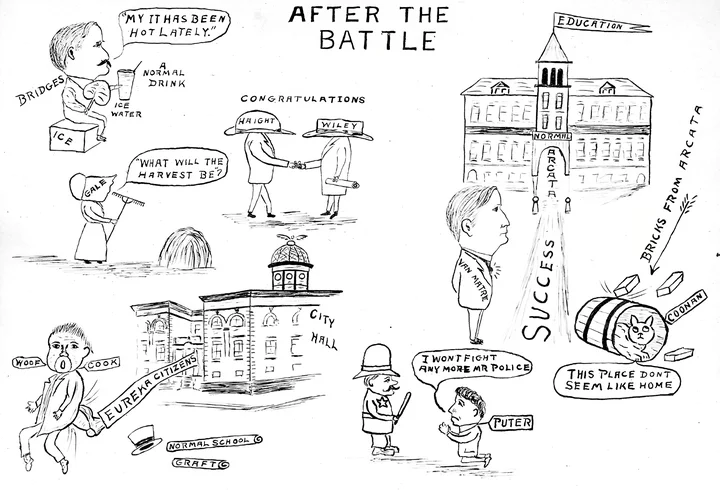

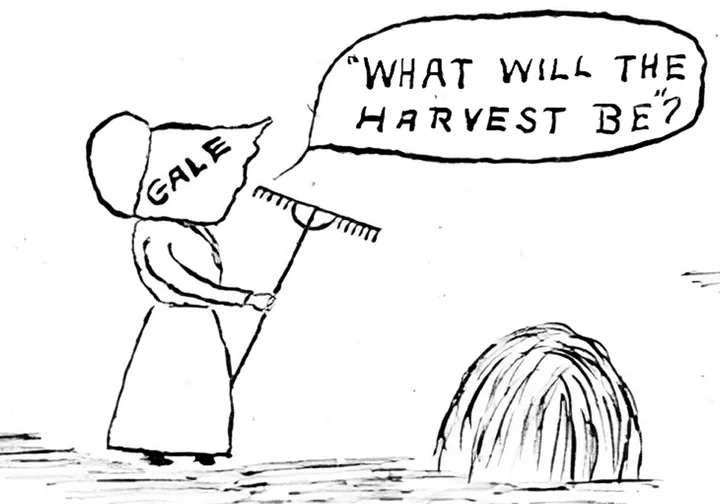
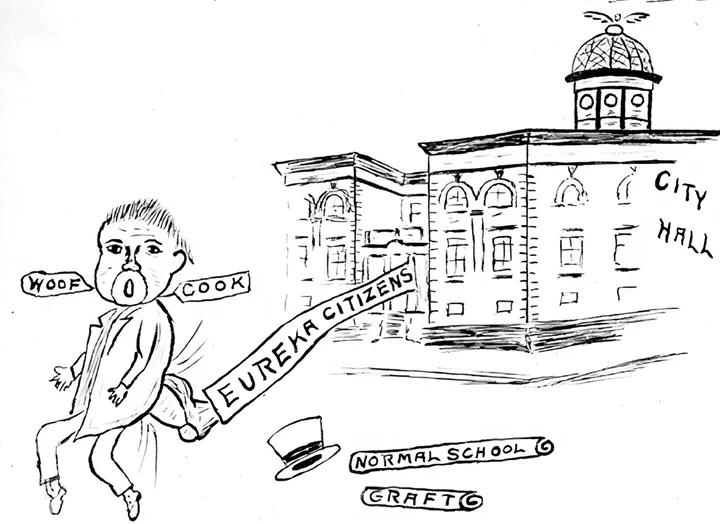
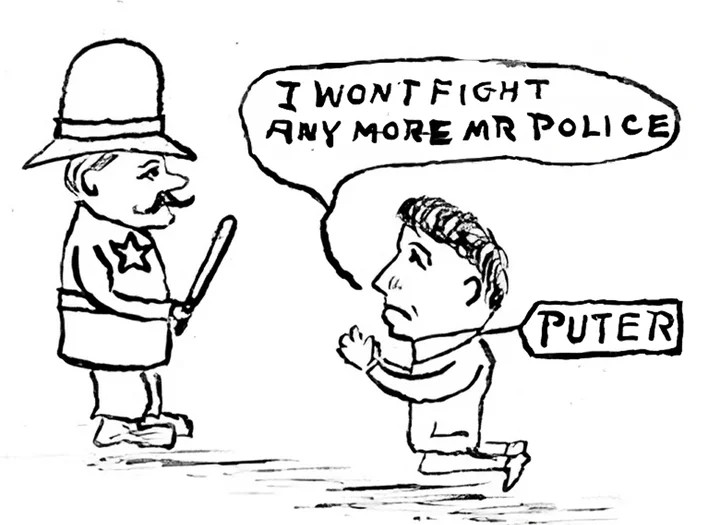
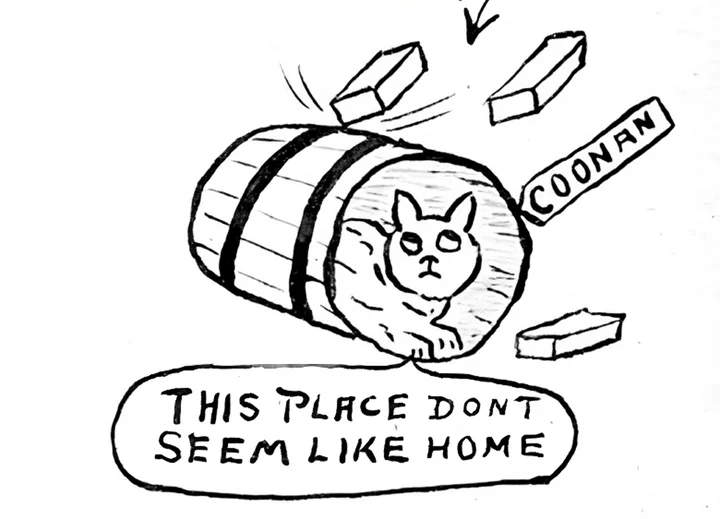
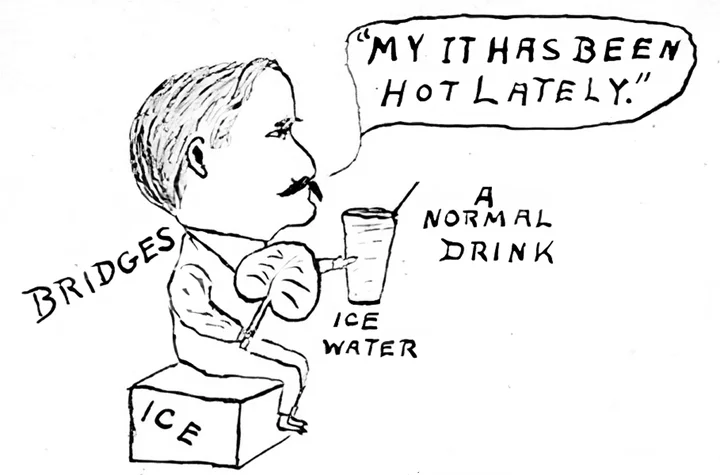

CLICK TO MANAGE